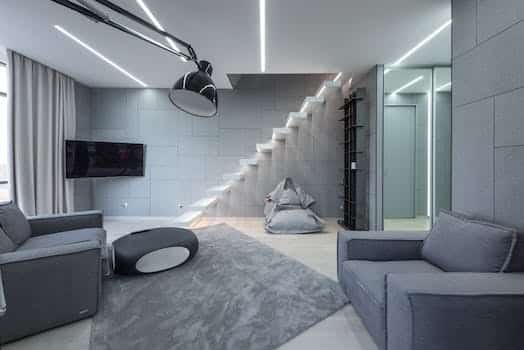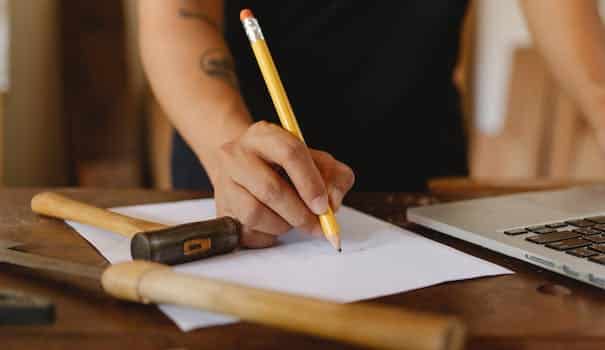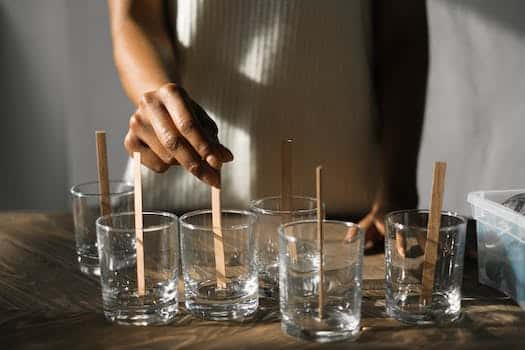Making a table lamp is a fun and rewarding DIY project that can add a personal touch to your home decor. With a few basic materials and some simple steps, you can create a unique and functional lamp that will brighten up any room. Whether you’re a seasoned DIYer or a beginner, this step-by-step guide will walk you through the process of making a table lamp from start to finish.
- 1. Step-by-Step Guide to Making a Table Lamp
- 1.1. Gathering Materials
- 1.2. Preparing the Base
- 1.3. Wiring the Lamp
- 1.4. Adding the Shade
- 1.5. Final Touches
- 2. Gathering Materials
- 2.1. Choosing a Lamp Kit
- 2.2. Selecting a Lamp Base
- 2.3. Picking a Lamp Shade
- 2.4. Gathering Tools
- 2.5. Buying Electrical Components
- 3. Preparing the Base
- 3.1. Prepping the Lamp Base
- 3.2. Drilling Holes for Wiring
- 3.3. Sanding the Base
- 3.4. Priming and Painting
- 3.5. Adding Decorative Elements
- 4. Wiring the Lamp
- 4.1. Preparing the Lamp Cord
- 4.2. Attaching the Socket
- 4.3. Wiring the Socket
- 4.4. Connecting the Cord to the Base
- 4.5. Testing the Wiring
- 5. Adding the Shade
- 5.1. Choosing a Lamp Shade Fitter
- 5.2. Fitting the Shade to the Base
- 5.3. Securing the Shade
- 5.4. Making Adjustments
- 5.5. Adding Final Touches
- 6. Final Touches
- 6.1. Adding a Lamp Finial
- 6.2. Cleaning the Lamp
- 6.3. Adjusting the Light
- 6.4. Displaying the Lamp
- 6.5. Troubleshooting Tips
1. Step-by-Step Guide to Making a Table Lamp
To make a table lamp, you will need a few supplies including a lamp kit, lampshade, lamp base, and light bulb. Begin by assembling the lamp kit according to the instructions provided. Next, select a lamp base that fits your personal style and the decor of the room where the lamp will be placed. Attach the lamp kit to the base and secure it in place. Finally, choose a lampshade that complements the style and color scheme of your room and attach it to the lamp kit. Once everything is in place, insert a light bulb and turn on your new table lamp!
1.1. Gathering Materials
Before you begin making your table lamp, you’ll need to gather all the necessary materials. Here’s a list of what you’ll need:
– Lamp kit (includes socket, cord, and plug)
– Lamp base
– Lamp shade
– Light bulb
– Screwdriver
– Pliers
– Wire cutter
– Glue
Make sure to choose a lamp base and shade that complement each other in style and size. You can find lamp kits and other supplies at your local hardware store or online. Once you have all your materials, you’re ready to start creating your custom table lamp!
1.2. Preparing the Base
Before you begin making your table lamp, it’s important to properly prepare the base. Here are the steps you should follow:
1. Choose a sturdy base that is the right size and shape for your lamp. It should be able to support the weight of the lamp shade and bulb.
2. Sand the base to create a smooth surface. This will help the paint or finish adhere better.
3. Fill any cracks or holes with wood filler and let it dry completely. Then sand the surface again.
4. Prime the base with a good quality primer. This will help seal the wood and create a better surface for the paint or finish to adhere to.
5. Paint or finish the base as desired. You may want to use a spray paint or stain for a smooth, even finish.
By properly preparing the base, you can ensure that your table lamp will be sturdy, stable, and look great.
1.3. Wiring the Lamp
Wiring the lamp is an essential step in making a table lamp. A lamp cannot function without a proper wiring connection. Here is a step-by-step guide to wiring a table lamp:
1. Gather all necessary materials including the lamp cord, socket, plug, and wire strippers.
2. Cut the lamp cord to the desired length and strip the ends of the wires.
3. Thread the cord through the socket cap and attach the wire ends to the socket terminals. The neutral wire (usually ribbed) should be connected to the silver terminal, while the hot wire (usually smooth) should be connected to the brass terminal.
4. Secure the socket shell to the cap, and screw the cap onto the lamp base.
5. Thread the cord through the lamp harp and attach the plug to the other end of the cord. The neutral wire should be connected to the wider prong, while the hot wire should be connected to the narrower prong.
6. Test the lamp to ensure it is functioning properly before using it.
By following these steps, you can successfully wire your own table lamp and add a personalized touch to your home decor.
1.4. Adding the Shade
Adding the shade is the final step in making a table lamp. This is where you can add your personal touch and style to the lamp. There are many different types of shades available, including fabric, paper, and glass. Choose a shade that complements the style and color of your lamp base.
To install the shade, first remove the finial from the top of the lamp. Place the shade over the bulb socket and adjust it until it sits evenly. Once you are happy with the placement, secure the shade in place by tightening the finial back onto the socket.
Remember to use the appropriate wattage bulb for your shade to ensure it doesn’t overheat or become a fire hazard. With the shade in place, your table lamp is now complete and ready to use!
1.5. Final Touches
After completing the previous steps, you’re almost done with your table lamp! Now it’s time to add some final touches to make it look even better. One of the first things you can do is to sand down any rough edges or surfaces on the lamp. This will give it a smoother and more polished look. You can also add a coat of paint or stain to the wood to give it some color and protect it from wear and tear. Finally, you can attach a lampshade to the top of the lamp to complete the look. Choose a shade that complements the style and color of your lamp. Once you’ve done all of these final touches, your table lamp is ready to use and enjoy!
2. Gathering Materials
When gathering materials for your DIY table lamp project, it’s important to have a clear idea of what you want the final product to look like. This will help you choose materials that will work well together and create the desired aesthetic. Some basic materials you will need include a lampshade, lamp base, light bulb, and electrical components such as a cord and plug. You may also want to consider additional materials such as decorative elements or paint to add a personal touch to your lamp. Take the time to research and select high quality materials to ensure your lamp looks and functions as intended.
2.1. Choosing a Lamp Kit
When it comes to making a table lamp, one of the most important decisions you will make is choosing the right lamp kit. A lamp kit typically includes all of the necessary electrical components, such as a socket, cord, plug, and switch. Some kits may also include a harp and finial. It’s important to choose a kit that is the right size and style for your lamp base. You’ll also want to consider the type of bulb you plan to use and ensure that the kit is compatible. Some kits may also come with instructions or diagrams to help you assemble the lamp.
2.2. Selecting a Lamp Base
When it comes to selecting a lamp base for your table lamp, you have a lot of options available. The first step is to consider the overall style of your room and what type of lamp base would best complement it. Some popular options include ceramic, glass, metal, and wood. You should also think about the size and shape of the base, as well as any decorative elements it may have.
Once you have selected your lamp base, it’s time to gather the rest of the materials you will need for your DIY project. This will typically include a lamp harp, lampshade, lamp cord, socket, and plug. You can find these items at most hardware or home improvement stores.
2.3. Picking a Lamp Shade
When it comes to picking a lamp shade, there are a few things to consider. First, think about the overall style of your lamp and the room it will be in. You want the shade to complement the lamp and the decor. Second, consider the size of the shade. It should be proportional to the lamp base and not too large or too small. Third, think about the material of the shade. Different materials will give off different amounts and types of light. Finally, consider the shape of the shade. Do you want a classic drum shape or something more unique like a bell or empire shape? By taking these factors into account, you can choose the perfect lamp shade for your DIY table lamp project.
2.4. Gathering Tools
Before you dive into making a table lamp, it’s important to gather all the necessary tools and materials. Here are the tools you’ll need:
– Screwdriver
– Wire cutters
– Pliers
– Glue gun
– Drill with bits
And here are the materials you’ll need:
– Lamp kit
– Lampshade
– Base
– Bulb
– Electrical cord
– Decorative elements (optional)
Once you have all of these items, you’re ready to start creating your table lamp!
2.5. Buying Electrical Components
When it comes to making a table lamp, one of the most important steps is gathering the necessary electrical components. These include a socket and cord set, a bulb, a switch, and a plug. It is important to purchase high-quality components that are safe and reliable. When shopping for electrical components, be sure to check the voltage and wattage requirements of your lamp design to ensure that you select the appropriate components. Additionally, it is important to buy components that are compatible with each other and that will fit properly in your lamp design. By taking the time to carefully select and purchase your electrical components, you can ensure that your finished table lamp will be both beautiful and functional.
3. Preparing the Base
Before you begin making a table lamp, it’s important to prepare the base. Start by gathering all the necessary materials, including a lamp base, lamp kit, lampshade, light bulb, wire cutters, pliers, and a screwdriver. Make sure to read the instructions on the lamp kit before starting. Next, choose a location for your lamp that is near an electrical outlet. Remove any old wiring or fixtures from the lamp base and clean it thoroughly. Once the base is clean and dry, assemble the lamp kit according to the instructions. This will typically involve attaching the socket to the base, threading the wire through the lamp and attaching it to the socket, and attaching the plug to the end of the wire. Finally, attach the lampshade and light bulb to complete your table lamp.
3.1. Prepping the Lamp Base
Before you begin assembling your table lamp, it’s important to properly prep the base. Here’s a step-by-step guide:
1. Clean the base of any dust or debris using a damp cloth.
2. Sand down any rough spots on the surface of the base.
3. Apply a coat of primer to the entire base to ensure that the paint will adhere properly.
4. Once the primer has dried, apply a coat of paint in the color of your choice.
5. Allow the paint to fully dry before handling the base.
By properly prepping the base, your finished lamp will look polished and professional.
3.2. Drilling Holes for Wiring
Before drilling holes for wiring, make sure the base of your lamp is sturdy and stable. If necessary, sand the surface of your base to create a flat and level area for attaching your lamp kit. Once your base is prepared, mark the spots where you will drill for wiring. Use a drill bit that is the appropriate size for your wiring and drill slowly to prevent cracking or damaging your base. After drilling, use a wire brush to remove any debris or sawdust from the holes.
3.3. Sanding the Base
Before starting the actual process of making a table lamp, it is important to prepare the base. One crucial step in this preparation process is sanding the base. Sanding not only smooths out any rough spots on the base, but also helps the paint or finish adhere better. To sand the base, you will need sandpaper with varying grits, starting from a coarser grit and moving towards a finer grit. Begin by using the coarser grit sandpaper to remove any rough spots or imperfections on the base. Then, move on to the finer grit sandpaper to achieve a smoother finish. After sanding, wipe the base clean with a damp cloth to remove any dust or debris. Once the base is sanded and clean, it is ready to be painted or finished according to your desired style.
3.4. Priming and Painting
Before starting to paint, it is important to prime the surface of the lamp base. This will help the paint adhere better and provide a smoother finish. Start by cleaning the lamp base with a damp cloth to remove any dust or debris. Then, apply a coat of primer using a paintbrush or spray can. Allow the primer to dry completely before moving on to the next step. Once the primer is dry, it is time to paint the lamp base. Select a paint that is suitable for the surface of the base and choose a color that complements your decor. Apply the paint in thin, even coats, allowing each coat to dry before applying the next. Depending on the color and type of paint, you may need to apply multiple coats to achieve the desired finish. Once the final coat is dry, the lamp base is ready to be assembled with the electrical components.
3.5. Adding Decorative Elements
Adding decorative elements is a great way to personalize your table lamp and make it stand out. You can use a variety of materials, such as beads, ribbons, flowers, or even paint, to add a unique touch to your lamp. Before adding any decorative elements, make sure that the base of your lamp is properly prepared and ready for customization.
4. Wiring the Lamp
Once you have all the necessary parts for your table lamp, it’s time to start wiring the lamp. Here is a step-by-step guide to help you through the process:
1. Begin by stripping the plastic coating off the wires that came with your lamp kit. You should have two wires, one black and one white. Use wire strippers to remove about 1/2 inch of plastic from the ends of each wire.
2. Next, take the black wire and attach it to the brass screw on the socket base. You can do this by wrapping the wire around the screw in a clockwise direction and tightening it with a screwdriver.
3. Now, take the white wire and attach it to the silver screw on the socket base, using the same method as in step 2.
4. Once both wires are securely attached, use electrical tape to wrap around the base of the socket and cover the exposed wires.
5. Finally, attach the harp and shade to the lamp and screw in a light bulb. Your table lamp is now complete and ready for use!
4.1. Preparing the Lamp Cord
Before you can start wiring your table lamp, you need to prepare the lamp cord. Begin by cutting the cord to the desired length, making sure to leave enough excess cord for wiring. Next, strip about 1 inch of insulation from the ends of the cord using wire strippers. Separate the two wires within the cord and strip about 1/4 inch of insulation from the ends of each wire. Finally, twist the exposed wire strands together and cover with a wire nut to secure.
4.2. Attaching the Socket
Attaching the socket is an important step in making your table lamp. Follow these simple steps to attach the socket:
1. Remove the socket cap by turning it counterclockwise.
2. Slide the shell over the cord and push it up to the socket cap.
3. Strip the ends of the cord wires and attach them to the screw terminals on the socket.
4. Screw the socket cap back on, making sure the shell is securely attached.
Now that the socket is attached, you’re ready to move on to wiring the lamp.
4.3. Wiring the Socket
Wiring the Socket:
To begin wiring the socket of your table lamp, you will need a few basic tools and materials. These include a lamp socket, lamp cord, a plug, wire cutters, wire strippers, and electrical tape.
First, take the lamp cord and use the wire cutters to strip about 1 inch of insulation from the ends of each wire. You should see two wires inside – one is smooth and one is ribbed.
Next, use the wire strippers to strip about 1/2 inch of insulation from the ends of each wire.
Take the lamp socket and remove the cardboard insulator from the bottom. You should see two screws – a silver one and a brass one.
Loosen the screws and wrap the ribbed wire around the silver screw in a clockwise direction. Tighten the screw securely with a screwdriver.
Wrap the smooth wire around the brass screw in a clockwise direction and tighten it securely with a screwdriver.
Replace the cardboard insulator and snap the socket shell onto the base.
Finally, attach the plug to the other end of the cord using the same process. Make sure to match the ribbed wire with the silver screw and the smooth wire with the brass screw.
Your lamp socket is now wired and ready for use!
4.4. Connecting the Cord to the Base
To wire the lamp, the first step is to connect the cord to the base. This can be done by threading the cord through the hole in the bottom of the base and pulling it through until there is enough slack to work with. Next, strip the ends of the cord to expose the wires. Depending on the type of cord you are using, there may be a ribbed wire and a smooth wire. The ribbed wire is the neutral wire and the smooth wire is the hot wire. If you are unsure which wire is which, consult the manufacturer’s instructions. Once you have identified the wires, use wire strippers to remove about 1/2 inch of insulation from each wire. Twist the strands of each wire together to form a tight bundle. Finally, use a wire nut to connect the neutral wire to the neutral wire from the lamp socket and the hot wire to the hot wire from the lamp socket. Tighten the wire nut securely and wrap the connection with electrical tape for added safety.
4.5. Testing the Wiring
To ensure that your table lamp will light up properly, it’s important to test the wiring before proceeding with the final assembly. To do this, you’ll need a multimeter, which can measure the electrical current flowing through the wires. Begin by checking the continuity of the wires, making sure that there are no breaks or loose connections. Then, test the voltage to ensure that the current is flowing properly. If there are any issues, you’ll need to troubleshoot and fix them before proceeding with the final assembly.
5. Adding the Shade
Adding the shade is the final step in making a table lamp and can really bring the whole project together. Here is a step-by-step guide to adding the shade:
1. Choose the right size and shape shade for your lamp. Measure the height and width of the lamp base and choose a shade that is proportional to the size.
2. Attach the harp and finial to the lamp. The harp is the metal frame that holds the shade in place, and the finial is the decorative piece that screws onto the top of the harp.
3. Place the shade onto the harp and adjust the position until it is centered and straight.
4. Tighten the finial to secure the shade in place.
5. Turn on the lamp and enjoy the new addition to your home decor!
5.1. Choosing a Lamp Shade Fitter
Choosing the right lamp shade fitter is important to ensure that your lamp shade sits properly on your lamp. There are three types of fitters to choose from: spider, uno, and clip-on. Spider fitters have a metal frame that sits on top of the lamp and a harp that holds the shade in place. Uno fitters are designed to fit directly onto the lamp socket and have a threaded ring that holds the shade in place. Clip-on fitters have metal clips that attach directly to the bulb and hold the shade in place. When choosing a fitter, make sure to measure the diameter of your lamp’s base and the length of the harp, if applicable, to ensure a proper fit.
5.2. Fitting the Shade to the Base
When it comes to adding the shade to your table lamp, it’s important to choose the right size and shape to fit the base. The shade should be proportional to the base and not overpower it. To determine the right size, measure the width of the lamp base and choose a shade that is 1-2 inches wider. For the height, the shade should be roughly 60-80% of the height of the lamp base. As for the shape, consider the style of your lamp base and choose a shade that complements it. A round or drum shade works well with a cylindrical base, while a tapered or square shade pairs nicely with a angular or square base. Take your time in choosing the right shade to ensure that your table lamp looks balanced and stylish.
5.3. Securing the Shade
When it comes to making a table lamp, one important aspect to consider is the shade. The shade not only adds to the overall aesthetic of the lamp, but it also serves a practical purpose by diffusing the light and preventing glare. Securing the shade is an important step in the process, as it ensures that the shade stays in place and does not wobble or fall off. There are various ways to secure the shade, including using a harp and finial, a spider fitter, or a clip-on fitter. Each method has its own advantages and disadvantages, so it is important to choose the one that best suits your needs and preferences.
5.4. Making Adjustments
After assembling the basic structure of your table lamp, the next step is to add the shade. Choosing the right shade can greatly impact the overall look and feel of your lamp. Here are some steps to guide you through the process:
1. Measure the dimensions of your lamp’s base to determine the appropriate size for your shade.
2. Choose a shade that complements the style and color of your lamp base.
3. Attach the shade harp to the lamp base and ensure it is securely in place.
4. Slide the lampshade onto the harp and adjust it until it is level and centered.
5. Finally, turn on your lamp and admire your newly finished product with its added shade.
5.5. Adding Final Touches
After assembling all the necessary parts of the table lamp, it’s time to add the final touches. One essential step is adding the shade. The shade not only provides the lamp with a finished look, but it also helps to diffuse the light and create a warm atmosphere.
To add the shade, first, make sure that the lamp harp and finial are in place. Then, measure the height of the harp and choose a shade that complements the lamp’s size and style. Make sure that the shade’s fitter (the metal ring that attaches to the harp) fits snugly onto the harp.
Once you have chosen the shade, carefully attach it to the lamp harp. Make sure that it is level and secure. Then, add the finial to the top of the harp to hold the shade in place. Be sure to tighten the finial so that the shade won’t wobble or become dislodged.
Finally, test out your new table lamp and enjoy the warm glow it provides. By following these steps, you can create a beautiful and functional addition to your home decor.
6. Final Touches
Once you have assembled all the components of your table lamp, it’s time to add the final touches to make it look polished and professional. Here are some steps to follow:
1. Sand the wooden base and any other wooden parts to remove any rough edges or imperfections. Use a fine-grit sandpaper and wipe away any dust with a clean cloth.
2. Apply a coat of primer to the wooden parts and let it dry completely. This will ensure that the paint adheres properly and looks smooth.
3. Paint the wooden parts with your chosen color and let it dry completely. Apply a second coat if necessary.
4. Attach the lampshade to the lamp harp by screwing it in place. Make sure it’s centered and straight.
5. Install the light bulb and lampshade finial.
6. Test the lamp to make sure it works properly.
With these final touches, your table lamp is now ready to light up your space in style!
6.1. Adding a Lamp Finial
Once you have completed the wiring and assembly of your table lamp, it’s time to add the final touches. One of the most important finishing details is the lamp finial. This small decorative piece sits on top of the lampshade and serves to secure it in place while adding a stylish touch to the overall design. Here’s how to add a lamp finial to your table lamp:
1. Choose a finial that complements the style of your lamp and the decor of your room. Finials come in a wide range of materials, including metal, glass, ceramic, and wood, as well as various shapes and sizes.
2. Remove the lampshade by gently unscrewing it from the harp. Make sure to hold onto the harp to prevent it from falling or getting damaged.
3. Place the finial on top of the lampshade and screw it into place. Make sure it is snug but not too tight, as you may need to remove it in the future to change the bulb or clean the lampshade.
4. Replace the lampshade onto the harp and screw it back into place. Make sure it is level and sits securely on the harp.
With the addition of a stylish and functional lamp finial, your table lamp is now complete and ready to light up your space with both form and function.
6.2. Cleaning the Lamp
To give your newly made table lamp that final touch, it’s important to clean it properly. First, make sure the lamp is unplugged and has cooled down completely. Use a soft, dry cloth to gently wipe down the base and shade. For any stubborn dust or stains, lightly dampen the cloth with water or a mild cleaning solution. Avoid using harsh chemicals or abrasive materials that may damage the lamp’s finish. Once the lamp is clean, double check all the electrical connections and reassemble any pieces that were removed during the cleaning process.
6.3. Adjusting the Light
After assembling the lamp and attaching the shade, it’s time to adjust the light to your liking. Start by turning on the lamp and evaluating the brightness. If it’s too bright, consider using a lower wattage bulb or adding a lampshade liner to diffuse the light. If it’s too dim, try a higher wattage bulb or removing the lampshade altogether. Additionally, you can adjust the angle of the shade to direct the light where you need it most. Once you’ve found the perfect balance, your lamp is ready to use!
6.4. Displaying the Lamp
Once you have assembled all the parts of your table lamp, it’s time to display it. Find a suitable spot in your room where you want to place the lamp and ensure that the electrical socket is nearby. Carefully plug in the cord of the lamp and switch it on to test if it’s working correctly. Adjust the angle of the lampshade to direct the light where you want it to shine. You can also experiment with different wattage bulbs to achieve the desired brightness. With these final touches, your table lamp is now ready to light up your space.
6.5. Troubleshooting Tips
Troubleshooting Tips:
1. If the lamp doesn’t turn on, make sure the light bulb is screwed in tightly.
2. If the lamp flickers, replace the light bulb with a new one.
3. If the lamp base is wobbly, check if the screws holding it together are tight enough.
4. If the lampshade doesn’t sit straight, adjust the harp or finial until it’s level.
Final Touches:
1. Wipe down the lamp with a dry cloth to remove any dust or debris.
2. Place the lamp on a level surface and adjust the shade until it’s properly aligned.
3. Turn on the lamp and admire your handiwork!
Conclusion
In conclusion, making a table lamp can be a fun and rewarding DIY project. By following these step-by-step instructions and using the right tools and materials, you can create a beautiful and functional lamp that will add style and ambiance to any room in your home.






These 10 innovative and imaginative DIY home decor ideas from [object Object] provide a refreshing approach to enhancing ones living…